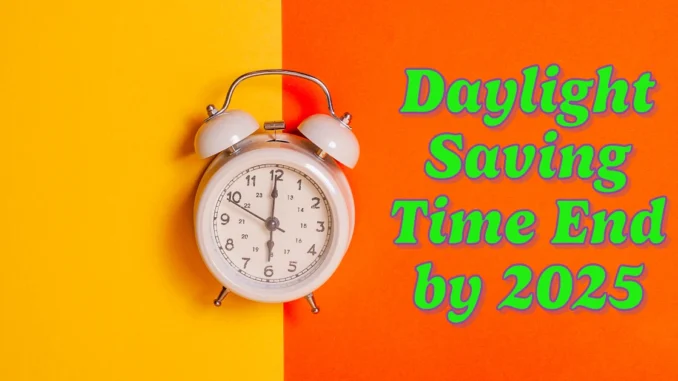
Daylight saving time (DST), a long-standing practice in the United States, may soon become a thing of the past. President-elect Donald Trump has reignited the debate, announcing on his social media platform his intent to eliminate the biannual clock change, labeling it as “useless and costly.” If Trump’s proposal gains traction, 2025 could mark the beginning of a permanent shift in how Americans keep time.
Table of Contents
The History and Purpose of Daylight Saving Time
First introduced nationwide in the 1960s, daylight saving time was designed to maximize sunlight during the summer months, aiming to reduce energy consumption. By setting clocks forward one hour, evenings are extended, and mornings become slightly darker. However, its effectiveness and relevance in modern times have come under scrutiny.
Proponents argue that DST encourages outdoor activities, saves electricity, and benefits businesses, while detractors highlight significant downsides, including:
- Disruption to sleep cycles and daily routines
- Increased risk of cardiovascular and mental health issues
- Diminished energy savings due to changes in modern energy use
$1,200 Monthly at Age 62: How to Qualify for Your Social Security Benefits
SSI New Policy 2025: Simplified Rules Expand Access to Monthly Benefits
SSDI Payment Dates and Amounts for January 2025: Everything You Need to Know
January 2025 SNAP Food Stamps: State-by-State Payment Schedule and Key Details
IRS Announces $2,000 Child Tax Credit for 2025: Are You Eligible?
The Growing Movement Against Daylight Saving Time
Opposition to DST isn’t new. Over the past decade, nearly 30 states have introduced or passed legislation seeking to end the practice, though such changes require federal approval. The most notable push occurred in 2022 when the Senate unanimously passed the Sunshine Protection Act, which proposed making daylight saving time permanent across the country.
Despite bipartisan support, the bill stalled in the House of Representatives. Lawmakers were divided over its implications:
- Supporters pointed to potential public health benefits, reduced car accidents, and economic boosts.
- Critics warned of darker winter mornings, especially for students and workers commuting early, and the need for nationwide consensus.
Trump’s Proposal: A Bold Step Forward?
Trump’s announcement brings fresh momentum to the debate. By labeling DST as “useless,” the president-elect positions himself as an advocate for eliminating the biannual clock change entirely. He argues that the measure could simplify daily life and mitigate its associated health risks.
However, making this change permanent will require the cooperation of Congress and extensive public consultation. While some Americans celebrate the idea of a consistent schedule, others voice concerns over losing cherished longer summer evenings.
How to Add $700+ to Your Monthly Social Security Check: Maximize Your Retirement Income:
New $1,914 Social Security Checks Arrive on Jan 2025: What Retirees Can Expect
End-of-Year Relief: Are You Eligible for the $800 Stimulus Check?
New York Residents to Receive $900 Heating Stimulus—Are You Eligible?
What’s Next for Daylight Saving Time?
As Trump prepares to assume office in January 2025, his administration’s approach to this issue could reshape how Americans experience time. Abolishing DST would align the U.S. with countries that have already abandoned the practice, such as Japan and Iceland, while sparking further discussions on how time policies affect society.
Whether this initiative succeeds will depend on building consensus among lawmakers, stakeholders, and the public. One thing is certain: the conversation about daylight saving time is far from over, and 2025 could mark a turning point in this century-old practice.
Leave a Reply